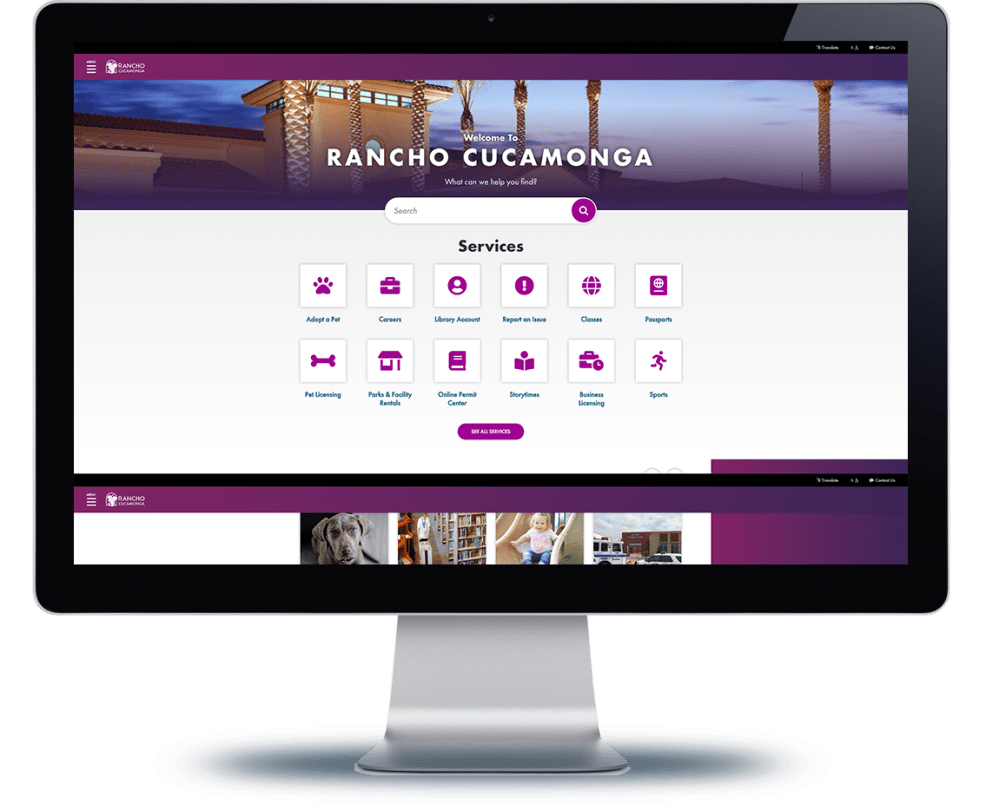
City of Rancho Cucamonga
Drupal, Acquia Cloud Platform

The Client
With the goal of building a “world-class community” for all those who live, work and play there, the City of Rancho Cucamonga in California has always been an area blessed with diversity. Crowned by the majestic San Gabriel Mountains, the City's planned communities and award-winning architecture reflect on a community proud of its past and excited by its future. With more than 20 parks and community facilities and a sunny, warm climate, Rancho Cucamonga has much to offer the residents and businesses that call the city home. The city has been ranked one of the top 50 “Best Places to Live” by Money magazine while the area’s four public high schools have earned a Silver distinction from U.S. News and World Report.
The Situation
Acting as an online extension of its physical offices, the City of Rancho Cucamonga website provides a variety of information and services for individuals and businesses. From accessing council meeting agendas to finding adoptable pets, visitors rely on the website as a conduit to receive information, conduct business and identify important City contacts. But the City’s previous site was “for gov by gov” making it difficult for those without knowledge of government hierarchies to easily find what they were looking for. Additionally, with analytics showing that 65% of users accessed the site on a mobile device, the previous site’s lack of responsiveness was leading to a less-than-stellar user experience.
The Challenge
Originally built on a proprietary web platform from a government solutions provider, the City’s website was hosted on-premise using staff-maintained web servers. But when one of the custom modules broke, forcing the City’s web team to move to the cloud, they decided to explore their options. With a desire to gain independence from vendor lock-in, the web team felt that separating content hosting from content management may help achieve their goals. Additionally, the City’s web team needed a CMS that provided content creators with both flexibility and stability, allowing them to more easily update content for a mobile-oriented site focused on providing the highest levels of service.

The Solution
After considering many of the consolidated website services prevalent in the government sector, the City’s web team determined that these services didn’t solve their primary needs for mobility and efficiency. Researching other city sites that were most similar to their vision, the team ultimately chose the combination of Drupal and Acquia Cloud Platform. Working with Acquia, the teams were able to meet the City’s very aggressive timeline to implement technology and make things happen; from the start of development to the launch of the live beta site took a mere eight months — remarkable in the government arena for a complete rebuild with no content migration.
The Results
Now a truly mobile and fully ADA-compliant site, the City’s new website — which was completed within its 12-month deadline — ensures that its majority-mobile audience receives the same high level of service as its desktop users. Additionally, the City’s hosting overhead costs have been slashed as they focus on improving the user experience — instead of on-site server maintenance. Content creation and editing tasks have improved exponentially and the team has removed extraneous pages, providing visitors with only the most relevant, up-to-date information possible. Metrics show that the site’s new streamlined approach is working well, with visitors needing to view fewer pages to achieve their goals. Clearly, the new website puts the City well on the path toward creating an “online City Hall” that meets its citizens’ needs in the most efficient, intuitive manner possible.